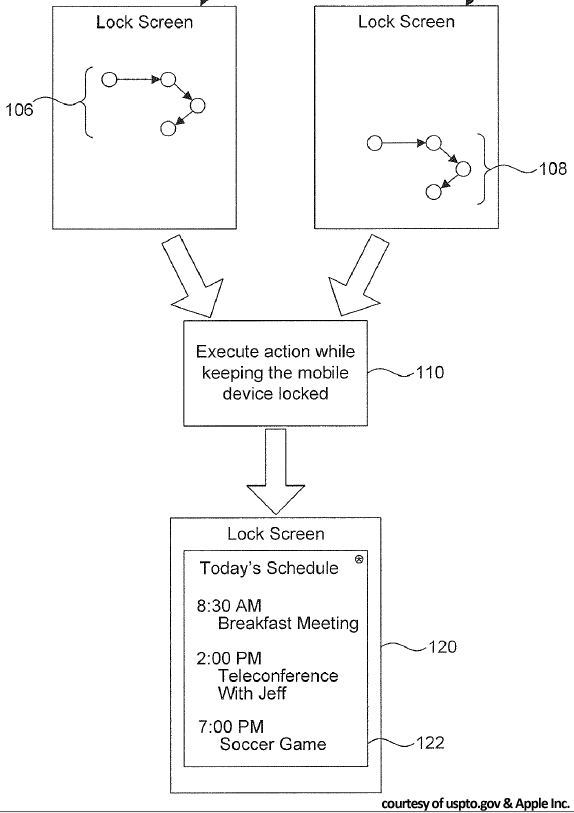Apple Inc. (NASDAQ:AAPL) may suffer from the attacks of patent trolls, but it is apparently not entirely immune from the urge to do some trolling of its own, according to a patent application it filed in 2012. This application seeks to patent a gesture-based unlocking system, in which the finger of the user slides to a series of waypoints on the screen in order to unlock the smartphone. The patent application, entitled “Gesture Entry Techniques,” closely resembles the Android “Pattern Unlock” system, right down to the accompanying diagram showing exactly nine waypoints.
There are also several notable differences between the patents, the most obvious being that Apple’s (AAPL) patent idea seems to be a more sophisticated version of the original. For instance, the unlocking method envisioned involves a sensor that can detect the speed of the swiping finger as well as its movement between waypoints. Thus, for example, someone could set their phone to pick up four different swiped segments, the first and last slow, and the middle two fast.
However, the foundational principle of both designs is entirely the same. Since Apple Inc. (AAPL) went on to develop the currently implemented TouchID system, it seems inescapable that the recent patent is intended mainly as a legal weapon to use against Google (NASDAQ:GOOG) and its Android smartphone platform.

The patent application’s timing is particularly damning as far as Apple’s (AAPL) motives are concerned. Google’s (GOOG) patent application was filed on May 14th, 2010, and U.S. Patent #20110283241, “Touch Gesture Actions From A Device’s Lock Screen,” was granted on November 17th, 2011. This established the “Pattern Unlock” system which was devised specifically to clearly avoid violating Apple’s “Slide-to-Unlock” feature.
Apple filed its own patent application, published by the U.S. Patent and Trademark Office (USPTO) on April 17th, 2014 as #20140109018, on October 12th, 2012, 11 months after the Pattern Unlock patent had already been granted and published. Though featuring a number of improvements and extra features that would make the gesture unlocking process even more secure (and perhaps even more appealing to tech geeks), the patent application is essentially the same idea rehashed.
Apple is clearly close to being granted this patent, if the application was published during the course of this week. Since TouchID is now the Cupertino company’s unlocking interface of choice, the patent will be useless for its original function. However, it could still prove to be a useful tool in retroactively attacking Google’s rights to their own gesture unlocking idea. The near future will show whether Apple allows the patent to quietly fade into the legal dustbin of never-realized concepts, or uses it actively in an effort to persecute its competitors.



